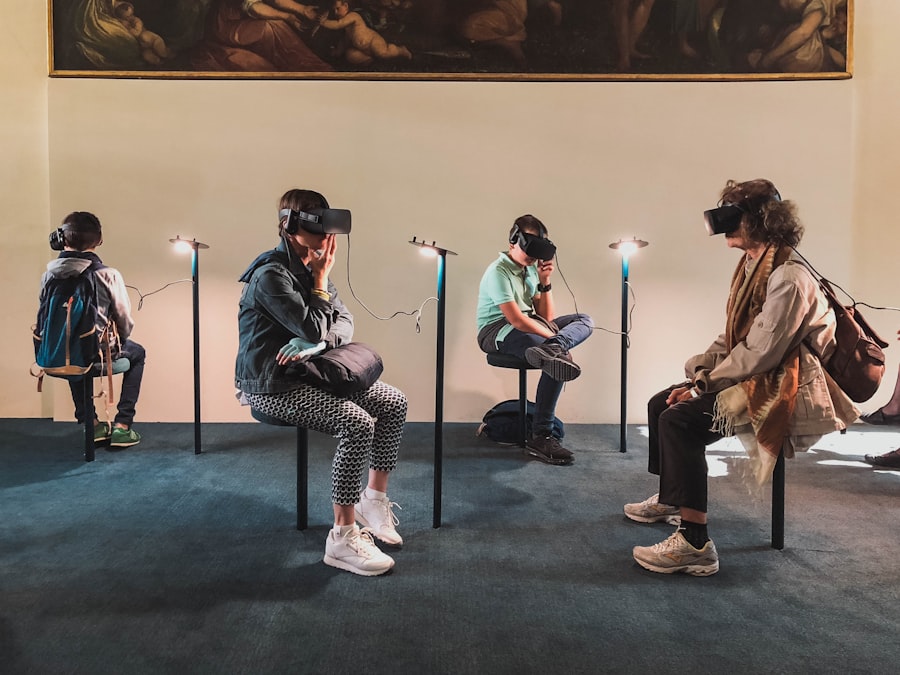Download links
How to install Exploring the Evolution of Electronic Games APK?
1. Tap the downloaded Exploring the Evolution of Electronic Games APK file.
2. Touch install.
3. Follow the steps on the screen.
Description
The inception of electronic games can be traced back to the early 1970s, a period marked by the birth of arcade gaming. One of the most iconic titles from this era is “Pong,” released by Atari in 1972. This simple two-dimensional table tennis simulation captured the imagination of players with its straightforward mechanics and engaging gameplay.
Players controlled paddles on either side of the screen, bouncing a pixelated ball back and forth. The success of “Pong” not only established Atari as a key player in the gaming industry but also laid the groundwork for future developments in video game design. Its popularity led to the proliferation of arcade machines in bars, restaurants, and entertainment venues, creating a new social space for gamers.
Following “Pong,” the gaming landscape expanded rapidly with the introduction of more complex titles. In 1980, Namco released “Pac-Man,” a game that would become a cultural phenomenon. Unlike its predecessors, which often featured sports or combat themes, “Pac-Man” introduced players to a maze filled with dots and ghosts, requiring strategy and quick reflexes.
The character of Pac-Man became an icon, transcending the gaming world and entering mainstream culture through merchandise, cartoons, and even music. The game’s success demonstrated that video games could appeal to a broader audience, including women and non-gamers, thus paving the way for future innovations in game design and marketing.
Key Takeaways
- Electronic games have come a long way from the early days of Pong and Pac-Man, evolving into a multi-billion dollar industry.
- The rise of home consoles like Nintendo and Sega sparked the console wars, shaping the gaming landscape and creating a loyal fanbase.
- Mobile gaming has had a significant impact, from the simple Snake game on Nokia to the addictive Candy Crush, changing the way people play and interact with games.
- Online gaming has revolutionized the industry with multiplayer and massive multiplayer online games (MMOs), allowing players to connect and compete on a global scale.
- Virtual reality and augmented reality are shaping the future of gaming, offering immersive experiences and new ways to interact with games, blurring the lines between the virtual and real world.
The Rise of Home Consoles: Nintendo, Sega, and the Console Wars
The NES Revolution
The NES not only revitalized a struggling industry following the video game crash of 1983 but also introduced iconic franchises such as “Super Mario Bros.” and “The Legend of Zelda.” These games showcased advanced graphics and engaging narratives, setting new standards for gameplay and storytelling in video games.
The Console Wars
Sega entered the fray with its Sega Genesis in 1988, igniting what would become known as the “console wars.” This rivalry between Nintendo and Sega was characterized by aggressive marketing campaigns and innovative game releases. Sega’s “Sonic the Hedgehog” became a symbol of speed and attitude, appealing to a younger demographic that sought an alternative to Nintendo’s family-friendly image.
Innovation and Advancements
The competition pushed both companies to innovate continuously, leading to advancements in graphics, sound, and gameplay mechanics. The introduction of 16-bit graphics with the Genesis and later 32-bit systems showcased a significant leap in technology, allowing developers to create more immersive experiences.
The Impact of Mobile Gaming: From Snake on Nokia to Candy Crush

The advent of mobile gaming marked a significant shift in how games were consumed and played. In the late 1990s, Nokia’s inclusion of “Snake” on its mobile phones introduced millions to gaming on-the-go. This simple yet addictive game allowed players to control a growing snake as it consumed dots on the screen while avoiding collisions with itself.
“Snake” was revolutionary in that it demonstrated that gaming could be accessible anywhere and anytime, laying the groundwork for future mobile gaming innovations. As technology advanced, smartphones emerged as powerful gaming devices, leading to an explosion in mobile gaming popularity. The release of Apple’s App Store in 2008 transformed the landscape by providing developers with a platform to distribute their games directly to consumers.
Titles like “Angry Birds” and “Candy Crush Saga” became household names, showcasing how mobile games could achieve massive success through simple mechanics and engaging gameplay loops. These games capitalized on social connectivity, allowing players to share their achievements and compete with friends, further enhancing their appeal. The mobile gaming market has since grown exponentially, with revenues surpassing those of traditional console and PC gaming combined.
The Emergence of Online Gaming: Multiplayer and Massive Multiplayer Online Games (MMOs)
| Online Gaming Metrics | Multiplayer Games | MMOs |
|---|---|---|
| Number of Players | 2 or more | Thousands to millions |
| Interaction | Real-time communication and collaboration | Complex social structures and economies |
| Gameplay | Cooperative or competitive | Quests, raids, and player vs player combat |
| Community | Smaller, more intimate groups | Large, diverse player base |
| Technology | Less demanding on hardware and internet connection | Requires high-speed internet and powerful hardware |
The rise of the internet in the late 1990s and early 2000s ushered in a new era for gaming: online multiplayer experiences. Games like “Quake” and “Counter-Strike” allowed players to compete against each other over local area networks (LAN) and eventually over the internet. This shift not only changed how games were played but also fostered communities around shared interests.
Players could connect with others from around the world, forming friendships and rivalries that transcended geographical boundaries. The emergence of Massive Multiplayer Online Games (MMOs) further revolutionized online gaming by creating expansive virtual worlds where thousands of players could interact simultaneously. Titles like “World of Warcraft,” released in 2004, became cultural phenomena, offering immersive experiences that combined role-playing elements with social interaction.
Players could create characters, embark on quests, and engage in player-versus-player combat within a richly detailed fantasy universe. The social dynamics within these games often mirrored real-life interactions, leading to the formation of guilds and communities that provided support and camaraderie among players. This evolution not only changed how games were designed but also influenced social behaviors and relationships in the digital age.
Virtual Reality and Augmented Reality: The Future of Gaming
As technology continues to advance at an unprecedented pace, virtual reality (VR) and augmented reality (AR) have emerged as frontiers in gaming innovation. VR technology immerses players in fully realized digital environments through headsets like Oculus Rift and HTC Vive. These devices allow users to experience games in a way that feels incredibly lifelike, engaging multiple senses simultaneously.
Titles such as “Beat Saber” and “Half-Life: Alyx” have showcased the potential of VR by offering unique gameplay experiences that leverage spatial awareness and physical movement. On the other hand, AR has brought gaming into the real world by overlaying digital elements onto physical environments. The release of “Pokémon GO” in 2016 exemplified this trend, encouraging players to explore their surroundings while capturing virtual creatures.
This blend of reality and digital interaction not only revitalized interest in outdoor activities but also fostered community engagement as players gathered in public spaces to participate in events together. As both VR and AR technologies continue to evolve, they promise to redefine how players interact with games, blurring the lines between reality and virtual experiences.
The Influence of Electronic Games on Society and Culture

The impact of electronic games extends far beyond entertainment; they have become a significant cultural force shaping societal norms and behaviors. Video games have influenced art, music, fashion, and even language, creating a rich tapestry of cultural references that permeate everyday life. For instance, iconic characters like Mario or Lara Croft have become symbols recognized across generations, influencing fashion trends and inspiring countless adaptations in other media.
Moreover, electronic games have sparked discussions around important social issues such as representation, violence, and mental health. As gaming becomes more inclusive with diverse characters and narratives, it challenges traditional stereotypes and promotes understanding among different cultures.
These discussions highlight the dual nature of electronic games as both a source of entertainment and a platform for societal reflection. In conclusion, electronic games have evolved dramatically since their inception, shaping not only the entertainment industry but also influencing broader cultural dynamics. From early arcade classics to modern virtual reality experiences, each phase of gaming history has contributed to a rich narrative that continues to unfold today.
As technology advances further, it will be fascinating to see how electronic games continue to shape our world in ways we have yet to imagine.
If you’re a fan of electronic games, you may also be interested in mastering the art of online fishing. Check out this article on Taya365 to learn more about how to improve your skills in virtual fishing. It’s a great way to relax and unwind after a long gaming session.
FAQs
What are electronic games?
Electronic games are games that are played using electronic devices such as computers, gaming consoles, or mobile devices. These games can range from simple puzzle games to complex multiplayer online games.
What are the different types of electronic games?
There are various types of electronic games, including action games, adventure games, role-playing games, simulation games, strategy games, sports games, and puzzle games. Additionally, there are also educational games and games designed for fitness and exercise.
What are the benefits of playing electronic games?
Playing electronic games can have several benefits, including improving cognitive skills, problem-solving abilities, hand-eye coordination, and decision-making skills. Additionally, some games are designed to be educational and can help with learning and development.
Are there any potential drawbacks to playing electronic games?
Excessive gaming can lead to negative effects such as addiction, social isolation, and physical health issues. It is important to balance gaming with other activities and to be mindful of the amount of time spent playing electronic games.
What are some popular electronic games?
Some popular electronic games include “Fortnite,” “Minecraft,” “Call of Duty,” “League of Legends,” “FIFA,” “The Legend of Zelda,” “Super Mario,” and “Candy Crush Saga.” These games span various genres and platforms and have large player bases.





